Ukrainian Food: Basic Overview
Common Ingredients
Common Cooking Methods
Courses
Meals
Key Taste
Eating Etiquette
Meal Presentation
Culinary Festivals
Influence and Fusion
Popular Types of Ukrainian Food
-
Bread and Doughs
In Ukraine, these specialties include a variety of baked goods, adorned with garlic and herbs, to sweet and savory pastries.
-
Soups
Ukrainian soups are rich and diverse, featuring both meat and vegetable bases, often enriched with sour cream and served as a warm, comforting starter.
-
Pancakes
Ukrainian pancakes come in many forms, from thin and delicate to hearty and stuffed, serving as a versatile dish that can be either savory or sweet.
-
Cakes and Pastries
These include a variety of Ukrainian sweet treats, from airy, cream-filled cakes to rich, decorated breads that are especially popular during festive seasons.
-
Dumplings
Ukrainian dumplings are a comfort food staple, filled with everything from savory meats to sweet fruits.
-
Desserts
Ukrainian desserts are characterized by their use of natural sweeteners like honey and a rich array of fruits and nuts, offering a sweet finish to any meal.
-
Porridge
Porridge in Ukraine is a traditional breakfast dish, made from grains like buckwheat or cornmeal, and can be enjoyed with both sweet and savory accompaniments.
Ukrainian dishes are the traditional and diverse food creations of Ukraine, a country in Eastern Europe. These dishes are influenced by the neighboring countries, the climate, the rich soil, and the history of the people.
Ukrainian specialties often use simple ingredients, such as potatoes, cabbage, beets, eggs, meat, and dairy products, but they are cooked in various ways and seasoned with garlic, herbs, and spices. Ukrainian dishes are usually hearty, savory, and comforting, but they can also be sweet and tangy.
Let’s uncover fascinating information about the dishes of Ukraine. Then, explore the features that define these dishes along with some dining etiquette and customs, as well as some drinks to pair with dishes in the country.
29 Popular Ukrainian Dishes with Filters
Allow me to give you a hand when going through these Ukrainian dishes with the filter system that allows you to arrange them into alphabetical order, tastes, ingredients, dish types, cooking methods, and global popularity.
Remember to also drop by some culinary styles of Ukraine, encompassing choices like the most popular, national, and traditional dishes:
Salo
- Traditional
Salo is a Ukrainian dish made of cured pork fat, usually with little or no meat. It is a traditional and popular snack in the country, often eaten with rye bread, garlic, and vodka.
Salo can be salted, smoked, or seasoned with paprika or other spices. It can also be used as a spread, a filling, or a dessert.
In fact, it is so well-loved that the locals hold two annual festivals for this dish, one in February and one in September.
Salo can be eaten raw or cooked. The locals frequently fry or coarsely mince it with garlic and pair it with a famous traditional beet soup called Borscht.
Holodets
- Traditional
Holodets is a meat Aspic with the name coming from the Ukrainian word holodnyii, which means “cold”. It is also called kholodets or meat Aspic, often appearing at important celebrations like New Year’s Eve.
Back in the day, people had to cook meat for a very long time to turn it into jelly. Nowadays, using store-bought gelatin is more common since it is less time-consuming and more convenient.
The locals often use beef chuck, pig’s feet, hocks, bone broth, and other aromatics to achieve this exciting meat jelly dish. Ideally, holodets is usually served cold with horseradish sauce.
Olivye
- Traditional
Olivye is a potato salad with the original form of the dish created in the 1860s by a Belgian-born chef named Lucien Olivier. The dish is a favorite in Ukraine and many Slavic countries.
Served as an appetizer, olivye calls for diced veggies (the main one is potato), eggs, dill pickles, and some types of meat. After mixing these ingredients, it will be coated with mayonnaise and seasoned with mustard, salt, and pepper.
Pampushky
- Traditional
Pampushky is a soft pillowy bread featuring flavorful garlic toppings. These lovely yeasted buns from Ukraine come in both sweet and savory varieties.
The sweet version of pampushky is loaded with jam, cottage cheese, berries, and fresh fruit, while the savory variant is usually seasoned with garlic sauce and eaten with borscht (Ukrainian beet soup).
Bublik
- Traditional
Bublik is a term used in Eastern European nations, primarily Ukraine and Russia, to describe a round, yeasted bun that looks identical to an American bagel. Plus, bublik is not considered a breakfast item like bagels.
This Ukrainian treat is denser and chewier in texture. Bublik was first sold on the street, where it was hung on street carts and handed out to passers-by. But now, it has become a light appetizer or a typical snack for enjoying with a cup of tea or coffee.
Kartoplia Solimkoi
- Traditional
Kartoplia solimkoi is a Ukrainian dish of potatoes cut into thin strips and deep-fried until they achieve a crispy, golden texture. Often enjoyed as a side dish or a snack, it is commonly accompanied by sour cream or ketchup.
Popular in rural areas and became a favorite during World War II, this crunchy potato specialty is known for its straightforward preparation and comforting taste. When translated into English, its name refers to straw potatoes or shoestring potatoes, highlighting its thin, crispy nature.
Kysla Kapusta
- Traditional
Kysla kapusta is a traditional Ukrainian dish of fermented cabbage with the name “kapusta” means “cabbage” in Slavic languages.
To make kysla kapusta, cabbage is shredded and mixed with carrots, salt, and spices. The mixture is then packed into a clean jar and left to ferment for several weeks.
The fermentation process produces lactic acid, which gives the cabbage a sour and tangy flavor, as well as preserves it for a long time. Kysla kapusta is usually served cold as a side dish or a snack, often with rye bread, garlic, and vodka.
It can also be used as an ingredient in soups, salads, and pies. One of the most popular dishes that uses kysla kapusta is varenyky, which are Ukrainian dumplings filled with various fillings.
Knyshi
- Traditional
Knyshi are stuffed buns from Belarus and became popular in Western Ukraine. They are made with thin puff pastry dough and filled with various ingredients, such as meat, buckwheat, cheese, or jam.
Knyshi can be served as a snack or a light meal, and have different flavors depending on the filling. Knyshi is considered a traditional and delicious dish in Ukrainian cuisine.
Goulash
- Traditional
Goulash, also known as guliash, is a meat stew from Hungary, where it was initially created as a shepherd’s meal.
Over time, this scrumptious dish has spread across various European countries and become even more famous in Ukraine’s Hutsul cuisine.
Goulash stew is a combination of meat and vegetables seasoned with paprika and various spices. This dish is often enjoyed as a main course, and it is best served warm with noodles or bread.
Okroshka
- Traditional
Okroshka is a cold soup that combines the lightness of raw vegetables and the fresh taste of kvass (an authentic Russian drink) made from fermented rye bread.
The locals love to enjoy this soup during the summer to combat the heat in Ukraine. They always serve it cold, and sometimes they even put ice cubes into it to maintain its coolness in hot weather.
In Russian, okroshka means “crumbled”, referring to the diced vegetables mixed together.
Kasha
- Traditional
Kasha is a term encompassing any type of cooked grain, including buckwheat, wheat, barley, oats, millet, rye, or rice. These nutritious grains hold a significant place in Slavic diet and culture, particularly in Eastern Europe.
Interestingly, Ukraine stands as the world’s second-largest consumer of buckwheat, with an annual per capita consumption of 12 kg (26 lb. Kasha can be prepared by boiling in water or milk and is often seasoned with butter, sugar, or other ingredients to enhance its flavor.
It serves as both a hearty main dish and a comforting side dish, suitable for breakfast or any meal throughout the day.
Borscht
- Traditional
Borscht is a Ukrainian soup made with beets, vegetables, and stock. It is a traditional dish of Eastern Europe, especially in Ukraine, Russia, and Poland.
The soup is fit for serving hot or cold, with sour cream, eggs, or bread. Borscht has many variations, such as green borscht with sorrel, white borscht with rye, and cabbage borscht.
In Ukraine, each region has its own version of borscht, with some versions opting for mutton or lamb. An adaptation of borscht in Chernihiv even uses tomatoes and tart apples to create a signature sour taste.
Solyanka
- Traditional
Solyanka is a thick and sour soup that originated in Russia and became popular in Ukraine and other Eastern European countries.
It is made with different kinds of meat, fish, or mushrooms, as well as pickled cucumbers, cabbage, olives, and tomato paste. Often, the soup goes well with sour cream and bread.
Solyanka is said to cure a hangover; hence it’s also nicknamed “hangover soup”. Usually, the soup comes in three variants of meat, fish, or mushroom solyanka.
Kotleta Po-Kyivsky
- National
Kotleta po-kyivsky, also known as chicken Kiev, is a dish of chicken breast stuffed with herb butter, coated with breadcrumbs, and fried or baked until golden and crispy.
It is a classic dish of Ukrainian cuisine that became popular worldwide in the 1970s. Kotleta po-kyivsky is usually served with a salad, potatoes, or rice, and is enjoyed for its rich and buttery flavor.
Deruny
- Traditional
Deruny are traditional Ukrainian potato pancakes made with grated potatoes, onions, eggs, flour, and sour cream. They are fried in oil until golden and crispy on both sides, and served hot with more sour cream.
These crunchy treats are a popular and versatile dish that can be eaten as a main course, a side dish, or a snack. They are also known as draniki in Russian or Latkes in Yiddish.
Holubtsi
- Traditional
Holubtsi are Ukrainian cabbage rolls made with different kinds of fillings, such as meat, rice, vegetables, or cereals. The dish is cooked in various sauces, such as sour cream, tomato, or mushroom.
In Ukraine, the word “holubtsi” means “pigeons”, because the cabbage rolls resemble the shape of the birds. These cabbage rolls are a traditional item for everyday meals or as a festive dish on special occasions, such as Christmas Eve.
Furthermore, the cabbage rolls are even wrapped in different shapes to differentiate them, with examples such as envelopes for corn-filled holubtsi and folded edges for potato-filled holubtsi.
Banush
- Traditional
Banush, or banish, is a creamy and savory porridge made from cornmeal and sour cream, cooked in a pot or a pan. It is a traditional dish of the Hutsul people, who live in the Carpathian mountains of Ukraine and Romania.
This porridge stew is often topped with pork rind, mushrooms, and bryndza, a type of sheep cheese. The creamy specialty is a staple food of Ukrainian cuisine, especially in the western regions, and it is usually served as a main course or a side dish.
Kutia
- Traditional
Kutia is a sweet pudding made from cooked grains, such as wheat, barley, or millet, mixed with poppy seeds, honey, nuts, and dried fruits. It is a traditional dish of Ukrainian and other Eastern Orthodox cuisines.
Commonly, kutia is a common item on Christmas Eve, Feast of Jordan, and funerals. The treat even has a symbolic meaning, as it represents the connection between the living and the dead, the fertility of the land, and the hope for a good harvest.
People tend to consume kutia as the first course of a festive meal and sometimes leave overnight with a spoon for the ancestors’ souls.
Varenyky
- Traditional
Varenyky are a Ukrainian version of pierogi, featuring crescent-shaped dumplings made from unleavened dough and stuffed with various fillings, such as cheese, potato, cabbage, meat, or fruit.
They are a traditional and popular dish of Ukrainian cuisine. These dumplings are usually boiled or steamed for serving with sour cream, butter, onions, or bacon.
Varenyky are an ideal main course, side dish, or dessert, depending on the filling. These dumplings are also part of the festive meals on Christmas Eve and other occasions.
Varenyky are sometimes called pyrohy in some regions of Western Ukraine, and are similar to pierogi in other countries.
Kulesha
- Traditional
Kulesha is a dish of Ukrainian cornmeal mush cooked with butter, salt, and water until thick and smooth. It is then cut into slices and served with various toppings, such as bryndza cheese, bacon, pork rinds, or mushrooms.
This cornmeal mush comes from the Carpathian mountains, where it is also known as Mamalyga. It is a common and filling dish that can be eaten for breakfast, lunch, or dinner.
Pirozhki
- Traditional
Pirozhki are stuffed pastries featuring a soft and fluffy dough. They are a common dish in both Ukrainian and Russian cuisines and can be eaten as a snack, appetizer, or main course.
Pirozhki can be either baked or fried and have different shapes and sizes. They are often served with soup, sour cream, or butter.
Savory pies contain eggs, ground meat, mushrooms, onions, rice, or cabbage. On the other hand, sweet fillings require jam, quark cheese, and fruit.
Pysanka
- Traditional
Pysanka is a decorated egg that is made by applying wax patterns on the shell and dyeing it in different colors. These are a traditional and symbolic dish of Ukrainian culture, dating back to the pagan times when the egg represented life and fertility.
These eggs have many variations, such as krashanky (solid-colored eggs), lystovky (painted eggs), driapanky (scratched eggs), and biserky (beaded eggs). Pysanka is usually made for Easter and other occasions.
Paska
- Traditional
Paska is a sweet and fragrant Easter bread in Ukraine made from flour, egg, butter, and milk. The bread is a traditional dish of Ukraine and is baked in a tall cylindrical shape with a rounded top.
Paska is often decorated with dough ornaments, such as flowers or crosses. Additionally, the bread is garnished with a white glaze, sprinkles, or poppy seeds.
The inside of the bread may have a swirl of yellow and white, symbolizing Jesus’ resurrection and the Holy Spirit. Paska is usually filled in a koshyk (Easter basket) along with Easter eggs (pysanky) and other ceremonial foods, and blessed at church on Easter Eve.
Nalesniki
- Traditional
Nalesniki are thin and crispy Ukrainian crepes filled with cheese, fruit, or meat. They can be sweet or savory, and are often served with sour cream, butter, or jam.
These crepes are a common breakfast option, but can also be eaten as a dessert or a main course. Nalesniki is a festive dish that is popular during Shrovetide or Maslenitsa, the pre-Lenten celebrations in Ukraine.
Syrniki
- Traditional
Surniki are cheese pancakes in Ukraine created by frying the batter until golden and crispy. They are often enjoyed as a sweet or savory breakfast, snack, or dessert.
The term “syrniki” stems from the Slavic word “syr”, which means “curd cheese”. These pancakes are often served with sour cream, jam, or butter.
Walnut-stuffed Prunes
- Traditional
Walnut-stuffed prunes are a dessert that consists of dried prunes filled with walnuts and coated with sugar and cream. They are often eaten in winter at Christmas and New Year’s Eve, or in summer.
These sweet treats have a sweet and chewy texture, perfect for serving with chocolate or poppy seeds.
Kiev Cake
- National
Kiev cake is a Ukrainian dessert made from cocoa, meringue, buttercream, and hazelnuts. This light and airy cake comes with delicate decorative details and meringues as toppings.
The dessert first appeared in 1956 when a pastry chef tried to fix a batch of frozen cakes by spreading buttercream on top and decorating it with floral ornaments.
Later, in the 1970s, the recipe was perfected with the addition of different nuts, the most popular choice being hazelnut.
Korovai
- Traditional
Korovai is a traditional Ukrainian wedding bread that is baked and decorated with dough ornaments in the shapes of suns, moons, birds, flowers, and pine cones.
It is a large and round braided bread that symbolizes the union and harmony of the newlyweds and their families. Korovai is usually made by seven married women from different places, who bless the dough and the couple with their prayers and wishes.
The wedding cake is served at the wedding reception, and the top part is given to the bride and groom, the middle part to their parents, and the bottom part to the guests and musicians.
Kalach
- Traditional
Kalach is a braided bread that is made from wheat dough and shaped into a ring or a wreath. It is a traditional and symbolic dish for Christmas Eve, funerals, and other occasions in Ukraine.
Kalach represents the circle of life, the Trinity, and the blessing of the harvest. It is usually decorated with candles, fruits, and nuts, and served with honey or butter.
What Are the Features of Ukrainian Dishes?
Ukrainian dishes are characterized by their diversity and complexity, stemming from the various cooking traditions of the Ukrainian people.
Specialties feature a wide range of ingredients and involve intricate cooking methods, including frying, boiling, stewing, and baking.
The national dish of Ukraine is red borscht, a beet soup known for its variations across the country. Other popular dishes including varenyky (boiled dumplings) and holubtsi (cabbage rolls) share similarities with Eastern European cuisine.
The cuisine emphasizes grains and staple vegetables like potatoes, cabbages, mushrooms, and beetroots.
Ukrainian food combines traditional Slavic techniques with influences from other European cuisines, enriched by the country’s history of cultural exchange.
Bread and wheat products hold a special place in Ukrainian culture, often featured in elaborate decorations during celebrations.
Ukrainian dishes also play an important role in people’s eating customs and etiquette.
What Are Ukrainian Eating Customs and Etiquette?
Dining in Ukraine typically starts with a soup or cold appetizer, followed by a main course and dessert. Regarding table manners, locals hold forks in their left hands and knives in their right hands while enjoying our food.
For the drinks, the country’s love affair with alcohol is no secret. Horilka, a strong and versatile spirit infused with herbs, berries, or roots, is a must-try. For non-alcoholic beverages, uzvar, a refreshing concoction of dried fruits, most commonly apples and prunes, is ideal.
If you want to know more about enjoying Ukrainian dishes, look into the perfect drink options for these specialties.
What Ukrainian Dishes to Have with Beverages?
Pairing dishes with beverages from Ukraine focuses on complementing the rich flavors and hearty nature of Ukrainian cuisine. Here are some popular pairings:
After going through these Ukrainian dishes, I hope you are inspired to travel to Eastern Europe and experience this fantastic cuisine yourself. Share them with your friends and leave a comment about Ukrainian foods.

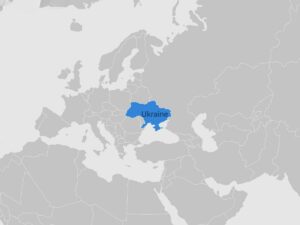
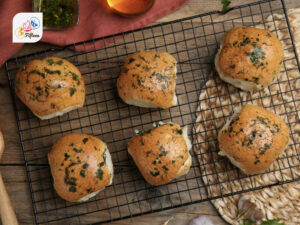
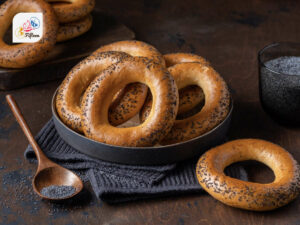
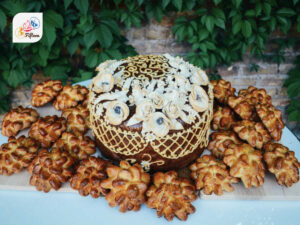
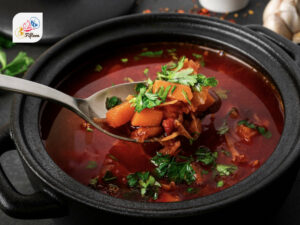
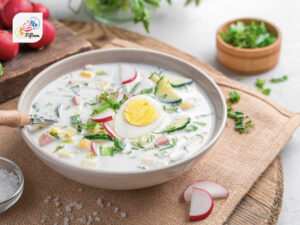
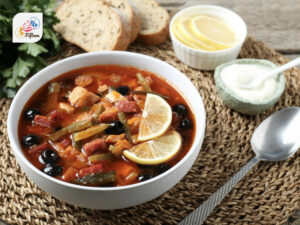
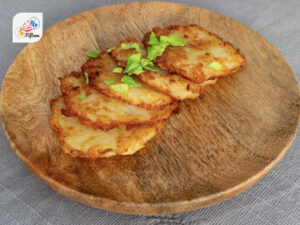


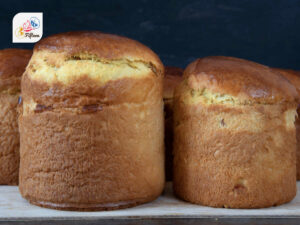
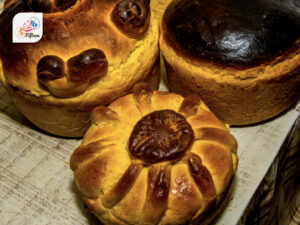
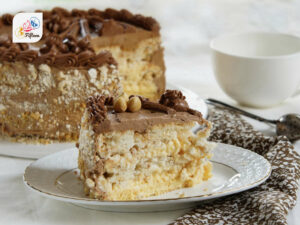
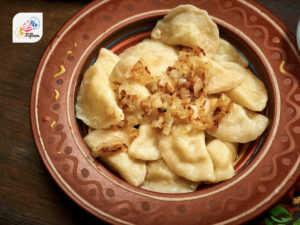
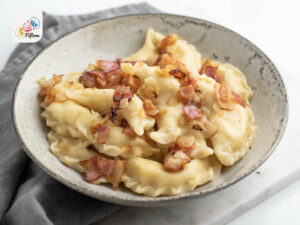

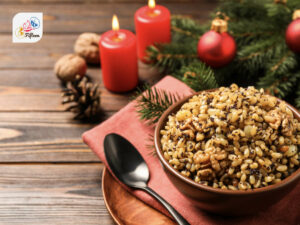
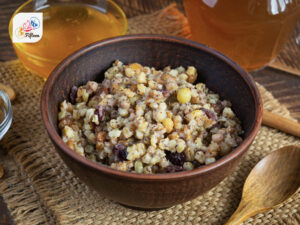
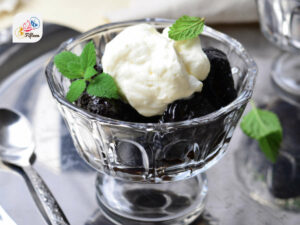
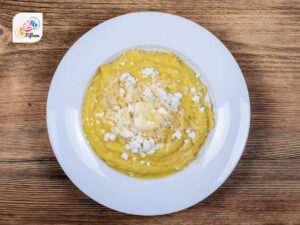
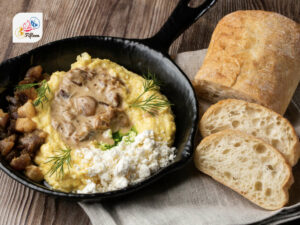
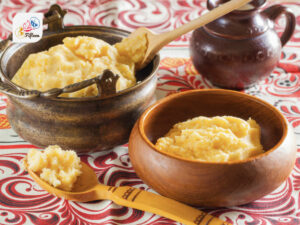
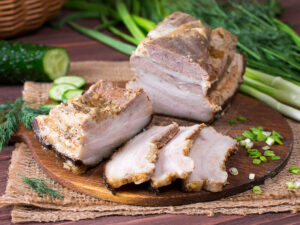
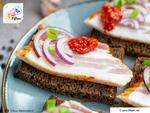
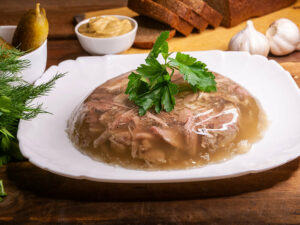
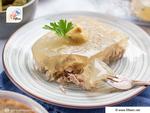
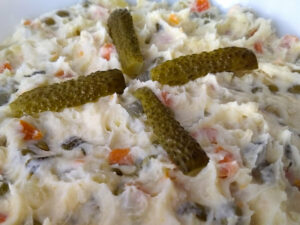
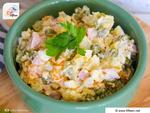
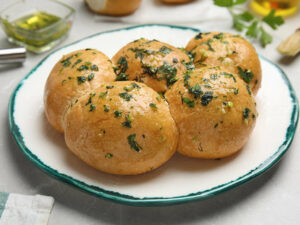
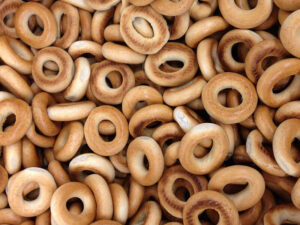
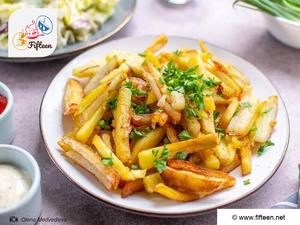
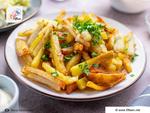
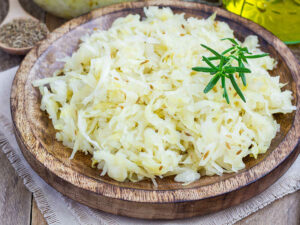
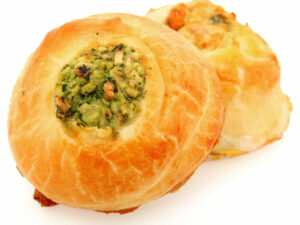
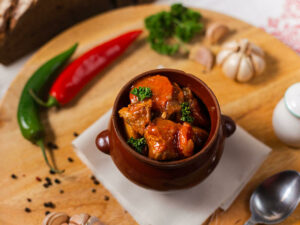
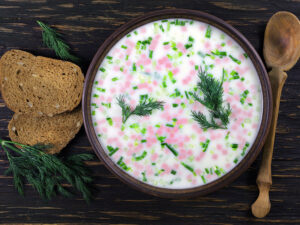
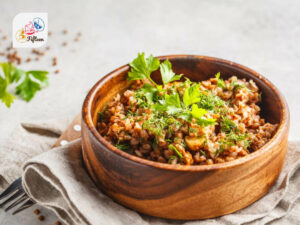
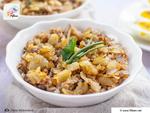
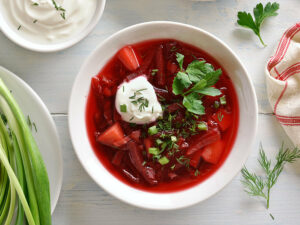
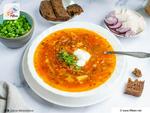
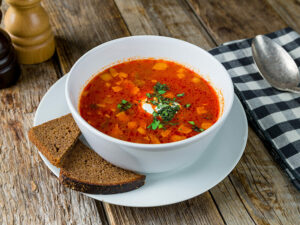
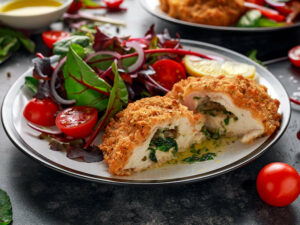

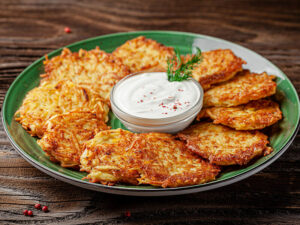
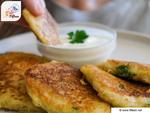
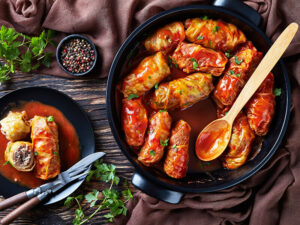
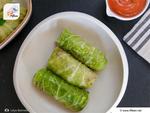
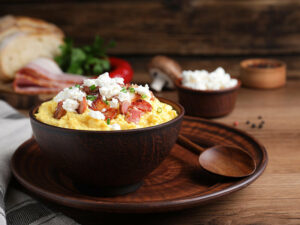
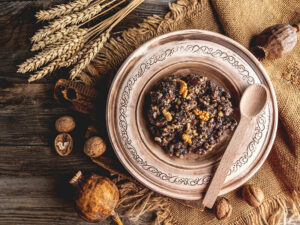
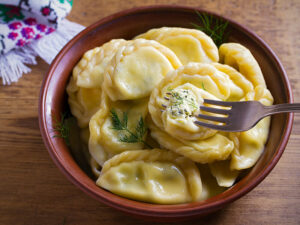

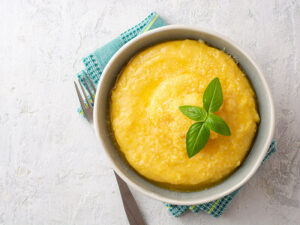

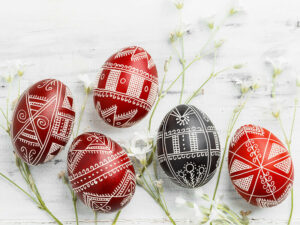

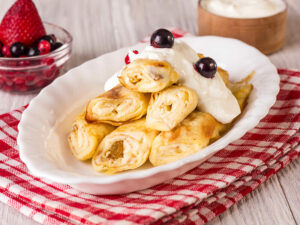

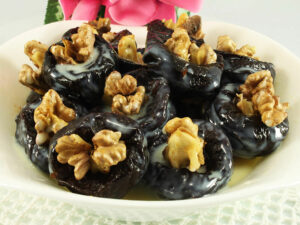
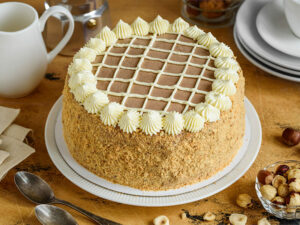


Jamie Scott
Editor in Chief, Senior Content Writer
Expertise
Home Cooking, Meal Planning, Recipe Development, Baking and Pastry, Food Editor, Cooking-video Maker, Western Food Evaluation Expert
Education
Le Cordon Bleu College of Culinary Arts
Local Community College, New York, NY
Jamie Scott is a skilled culinary expert and content creator specializing in Western cuisine. With over 15 years in the culinary field and formal training from Le Cordon Bleu, Paris, Jamie deeply understands how to blend nutrition with delicious flavors. His passion for cooking matches his commitment to making healthy eating accessible and enjoyable.
On Fifteen.net, Jamie brings a fresh perspective to classic dishes and beverages, offering readers insightful recipes, cooking tips, and a fresh view on meal planning that emphasizes taste, health, and simplicity.